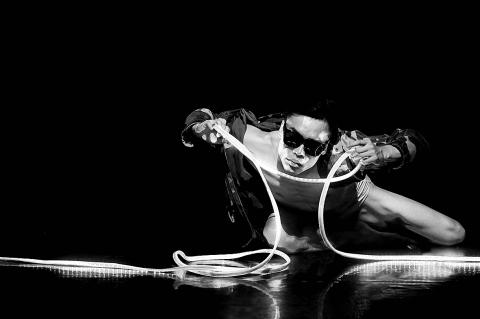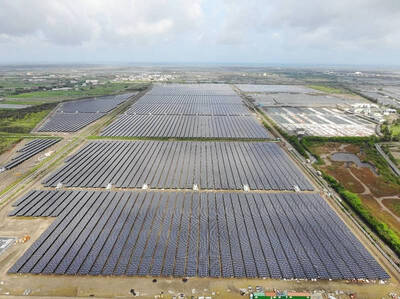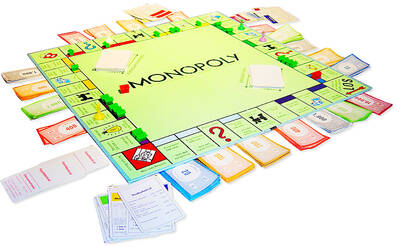The Century Contemporary Dance Company (CCDC, 世紀當代舞團) is hosting its third round Asia collaboration this weekend with Dance in Asia 2018 (2018驅動城市III 混亞洲) at the Huashan 1914 Creative Park in Taipei.
The Taiwanese side of the production features works by several CCDC dancers, including Li Huei-wun (李蕙雯), Liu Jia-rui (劉家瑞) and Mou Tien-yun (莫天昀) as well as Chang Ya-yuan (張雅媛), who has danced with several local troupes and won national awards for previous works, and Lai You-feng (賴有豐).
Artists from the Japanese multi-media art collective off-Nibroll, which presented three sold-out shows of its own version of Dance in Asia 2018 in February in Osaka, Japan, are in Taipei, including Saori Yoneda and Mikuni Yanaihara.

Photo courtesy of Century Contemporary Dance Company
Freelancers Hwang Soo-hyun from South Korea and Huang Chih-hsiung (黃志雄) from Malaysia round out the creative team
The idea behind this year’s project was to bring together artists from four cities —Taipei, Seoul, Tokyo and Kuala Lumpur — to “smash illusions” about the constraints facing Asian bodies, self-identity, family conflicts and the plurality of time, CCDC said.
It also hope that such cross-cultural programs, with Taipei as their center, will inspire ideas for future programs or dances.
There are two different programs: A, which features works, mostly solos, by Mou, Liu, Chang, Yanaihara and Huang; and B, which features works by Mou, Li, Lai, Yoneda and Hwang.
Program A will be performed tonight, tomorrow and Sunday at 7:30pm, while B will be performed at both matinees tomorrow and on Sunday afternoon.
■ Tonight, tomorrow and Sunday at 7:30pm, tomorrow at 2:30pm and 5pm, and Sunday at 2:30pm
■ Huashan 1914 Creative Park (華山1914), 2F Fruit Wine Building (果酒禮堂), 1, Bade Rd Sec 1, Taipei City (台北市八德路一段1號)
■ Tickets are NT$800 or NT$1,500 for special sponsorship seats, available at NTCH box offices, Eslite bookstore ticket desks, online at www.artsticket.com.tw or at convenience store ticket kiosks

With one week left until election day, the drama is high in the race for the Chinese Nationalist Party (KMT) chair. The race is still potentially wide open between the three frontrunners. The most accurate poll is done by Apollo Survey & Research Co (艾普羅民調公司), which was conducted a week and a half ago with two-thirds of the respondents party members, who are the only ones eligible to vote. For details on the candidates, check the Oct. 4 edition of this column, “A look at the KMT chair candidates” on page 12. The popular frontrunner was 56-year-old Cheng Li-wun (鄭麗文)

“How China Threatens to Force Taiwan Into a Total Blackout” screamed a Wall Street Journal (WSJ) headline last week, yet another of the endless clickbait examples of the energy threat via blockade that doesn’t exist. Since the headline is recycled, I will recycle the rebuttal: once industrial power demand collapses (there’s a blockade so trade is gone, remember?) “a handful of shops and factories could run for months on coal and renewables, as Ko Yun-ling (柯昀伶) and Chao Chia-wei (趙家緯) pointed out in a piece at Taiwan Insight earlier this year.” Sadly, the existence of these facts will not stop the

Oct. 13 to Oct. 19 When ordered to resign from her teaching position in June 1928 due to her husband’s anti-colonial activities, Lin Shih-hao (林氏好) refused to back down. The next day, she still showed up at Tainan Second Preschool, where she was warned that she would be fired if she didn’t comply. Lin continued to ignore the orders and was eventually let go without severance — even losing her pay for that month. Rather than despairing, she found a non-government job and even joined her husband Lu Ping-ting’s (盧丙丁) non-violent resistance and labor rights movements. When the government’s 1931 crackdown

The first Monopoly set I ever owned was the one everyone had — the classic edition with Mr Monopoly on the box. I bought it as a souvenir on holiday in my 30s. Twenty-five years later, I’ve got thousands of boxes stacked away in a warehouse, four Guinness World Records and have made several TV appearances. When Guinness visited my warehouse last year, they spent a whole day counting my collection. By the end, they confirmed I had 4,379 different sets. That was the fourth time I’d broken the record. There are many variants of Monopoly, and countries and businesses are constantly